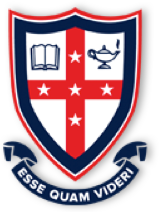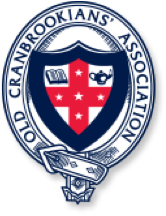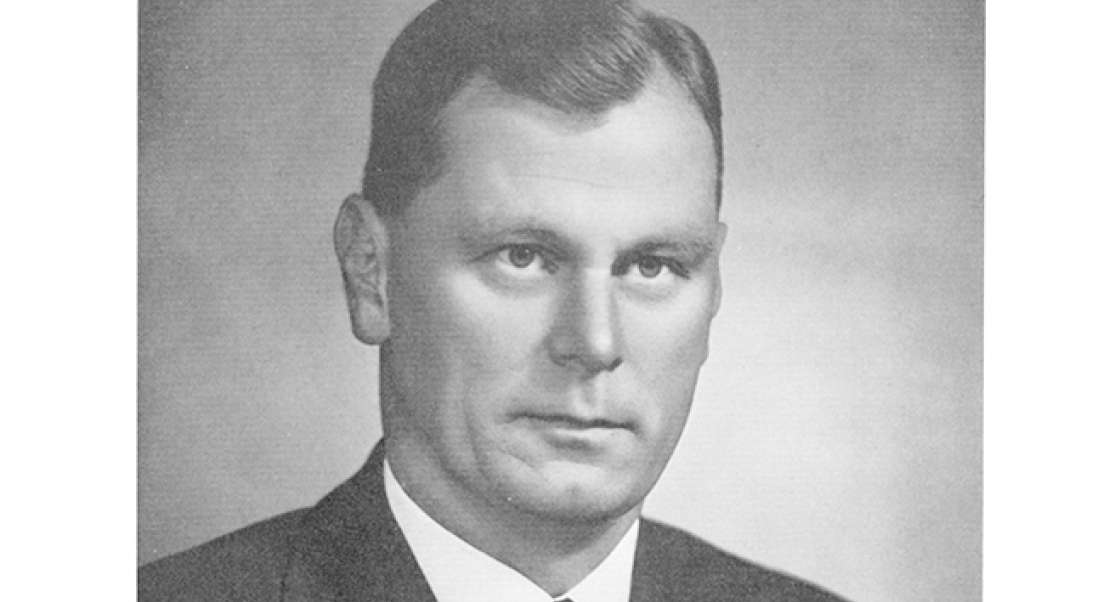Stories
Sir Brian Hone OBE, Headmaster, 1940-1950
Sir Brian Hone OBE (1907–1978) was a large man with a “lumbering frame” and a “booming voice, which often stuttered with excitement".1 He had a sharp intellect, having attended Oxford in 1930 as a Rhodes Scholar.2 He was also a highly capable sportsman, having won Blues in cricket, football and tennis at the University of Adelaide. He opened the batting for South Australia during the 1929-30 cricket season, while in 1933 he was team captain for the Oxford XI cricket team.3
Hone returned to Australia to take up the post of Headmaster of Cranbrook in 1940. He was only 33 years old.4 Hone had arrived at a time of crisis, with the previous Headmaster Lieutenant-General Mackay having resigned after the Christmas holidays in 1939. Having always wanted to run his own school, Hone attacked his new responsibility with verve.
Hone led a rejuvenation of the school’s culture but also the modernisation of its administration, facilities and hierarchy. He introduced a Housemaster system and oversaw the building of new accommodation.5 “He appointed the young painter Justin O’Brien to the art school and searched for energetic, highly qualified academic staff. To instil new values … he debunked premierships and lowered the prestige of sporting heroes” to make their achievements more human.6 Hone and the School Council coordinated this approach, which made it more effective.
Old Boy Tim Bruxner remembers how Hone “picked the school up and got it going”. Early in Hone’s tenure, Bruxner was called into the Headmaster’s study, to “see this very fine, tall figure of a man standing in front of me, looking down through his bushy eyebrows. He just looked at me and said, 'Bruxner, what is the matter with this school?' And that’s a pretty difficult ball to deliver to a 17-year-old boy.” Later, they would laugh about that, with Bruxner telling his former headmaster, “you talked to me a lot about cricket, Sir, but that was a very tough ball you bowled me that first day".7
Hone was known to be tough and at times impatient, earning the nickname “the Blitz” amongst his students, which was named after the Blitzkrieg, a tactic of the German army that immobilised and overwhelmed the opposition during WWII.8
But he was also known to be fair and open-minded. One Old Boy, later a pioneer in microsurgery, Professor Earl Owen, remembers how he was caught in the act of carving a full battle scene under the lid of his desk during class.9 Hone took him to his study to discuss “the value of school discipline and proper attendance to school subjects”, but as punishment, he asked Owen to use his carving skills to produce a version of the School crest and its motto, to hang behind Hone’s desk “for future generations”. Owen, having expected to be expelled, couldn’t believe his luck and “was even allowed to rescue the miniature battlefield from my desk as long as it was off the promises by nightfall".10
Hone left Cranbrook in 1950 to take up the position of Headmaster of Melbourne Grammar School. He had not sought the advancement; it happened after Bishop John McKie had told his School Council colleagues that “the best man in Australia had not applied".11 Appointed OBE in 1969, Hone was knighted for his services to education in 1970, the year of his retirement.12
- 1. Respectively, Weston Bate, “Hone, Sir Brian William (1907 – 1978)”, in Australian Dictionary of Biography, National Centre of Biography, Australian National University, http://adb.anu.edu.au/biography/hone-sir-brian-william-10532/text18697, published first in hard copy in Vol 14, (MUP), 1996, accessed online 29 June 2017; and Ian Hansen, “Marks of a Man”, The Age, 27 June 1978, p. 24.
- 2. He achieved honours in English and was tutored by C S Lewis: Bate, “Hone, Sir Brian William (1907 – 1978)”, in Australian Dictionary of Biography, National Centre of Biography, Australian National University, http://adb.anu.edu.au/biography/hone-sir-brian-william-10532/text18697, published first in hardcopy in Vol 14, (MUP), 1996, accessed online 29 June 2017.
- 3. Weston Bate, “Hone, Sir Brian William (1907 – 1978)”, op. cit. Hone’s continuing love of cricket was renowned at his different school posts.
- 4. After university, Hone had taught at Marlborough College in Wiltshire, England: “Appointment of Headmaster”, in The Cranbrookian, Vol. XXI, No. I, August 1940, p. 4.
- 5. Hone later remembered the school when he arrived as “dowdy; its buildings, though structurally admirable, were shabby; nothing had been added for many years.” Quoted in David Thomas and Mark McAndrew, Born in the Hour of Victory, Cranbrook School, 1918 – 1998, Sydney: Playright Publishing, 1998, p. 67. For a description of Hone’s tenure, see Chapter 4, pp. 65 – 99.
- 6. Weston Bate, “Hone, Sir Brian William (1907 – 1978)”, op. cit.
- 7. Interview with Mr Tim Bruxner, 13 January 1994, interviewer Vicki Mesley, Cranbrook School Oral History Project. Bruxner says that in answer to Hone’s question, he “gave him an impression of the way the boys were feeling”.
- 8. The recollection of the nickname comes from Interview with Mr Hamilton Harvey Sutton, 26 January 1994, interviewer Vicki Mesley, Cranbrook School Oral History Project. Students will often give their teachers unkind nicknames but this perhaps had a kernel of truth; the Australian Dictionary of Biography recalls that “Hone almost imprisoned his staff in meetings, where they were deluged with reading material and his latest views and plans. He was a determined, though genial, taskmaster, who led by example like a team captain on the field”: Weston Bate, “Hone, Sir Brian William (1907 – 1978)”, op. cit.
- 9. Owen had made “a really small army and its field guns, trucks, tanks, hospital, mess tent, and a jetty, [with] boats and sailors. Eventually I ran out of space, so I moved my books … onto the floor between my legs … I built an airfield with miniature planes in the newly available space inside my desk": Professor Earl Owen, Under the Microscope, The Story of an Australian Medical Pioneer (North Sydney: Random House, 2014), p. 23. Also see “Owen, Earl Ronald”, Sydney Medical School, https://sydney.edu.au/medicine/museum/mwmuseum/index.php/Owen,_Earl_Ronald, accessed on 30 June 2017.
- 10. Professor Earl Owen, Under the Microscope, The Story of an Australian Medical Pioneer (North Sydney: Random House, 2014), pp. 24 – 25.
- 11. Weston Bate, “Hone, Sir Brian William (1907 – 1978)”, op. cit.
- 12. Ibid.


